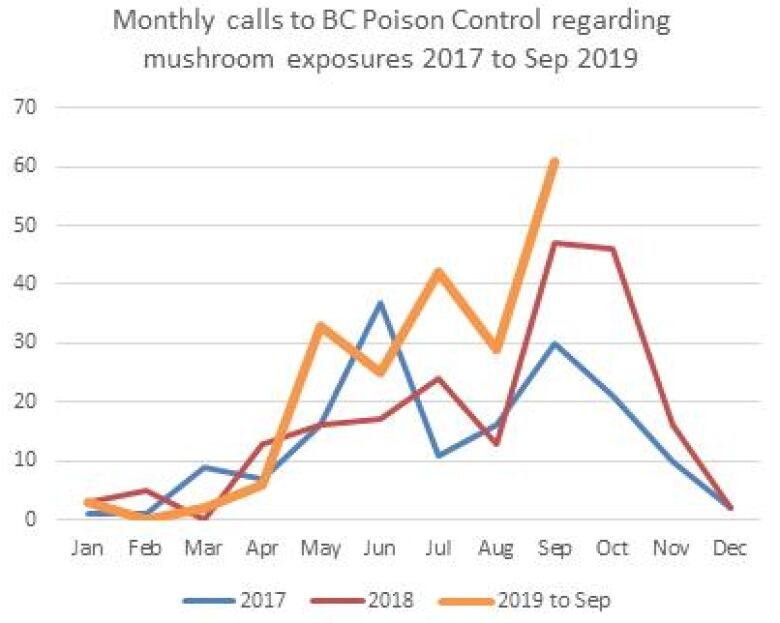Wild mushroom poisonings spike in B.C., prompting death cap warning
Officials reissue alert about deadly species after dramatic increase in reported poisonings

A spike in mushroom poisonings has prompted the B.C. Centre for Disease Control to issue a warning to foragers and wild mushroom enthusiasts to be extremely cautious in what they pick and eat.
In the first three quarters of 2019, the BCCDC poison control line has already received201 reports of wild mushroom poisoning.
That's only one fewer than all of 2018, and well above the 2017 total of 161.
"We would like to remind mushroom hunters, parents and pet owners to be vigilant as they enjoy cityparks, forests and even their own backyard," said Raymond Li, BCCDC poison control pharmacist.
Li says two-thirds of this year's calls have involved children under the age of five.

The major concern is the continued spread of the death cap mushroomacross the southern B.C. coastal region.
The deadly fungushas been found fruiting in Vancouver, Victoria, the Fraser Valley, southern Vancouver Island and the Gulf Islands.
Two dogs are believed to have died this year from eating death caps.In 2016 a three-year-old Victoria boy died after eating death caps that were foraged on a downtown boulevard.
Death caps are particularly dangerous because they resemble other varieties ofedible mushrooms.
The death cap is an invasive species thought to have been introduced on the roots of imported European hardwood treeslike the hornbeam, which was planted widely in Vancouver and Victoriain the 1960s and 1970s. The fungus can live on the roots of trees for 40 to 50 years before emerging.
Symptoms of death cap mushroom poisoning include low blood pressure,nausea and vomiting that begins eightto 12 hours after eating.
After around 24 hours, the first wave of symptoms disappear for a day or two, but symptoms of liver and kidney damage then appearthree to six days after ingestion.
BCCDCtips to stay safe while mushroom hunting:
- If you are unsure, don't eat it.
- Only pick and eat mushrooms that are well known to be edible and easy to distinguish from poisonous varieties.
- If you suspect you've consumed a poisonous mushroom, call the B.C. Drug and Poison Information Centre 24-hour phone lineat1-800-567-8911 and seek medical attention immediately.
- Only hunt for mushrooms in safe terrain and exercise extreme caution if in remote areas.
- Save one of each kind of mushroom so their identities can be confirmed should symptoms develop.
Homeowners who find death caps on their property can remove the mushrooms while wearing rubber gloves, double bagging them and disposing of them in the regular garbage,not the compost, according to Island Health.













_(720p).jpg)


 OFFICIAL HD MUSIC VIDEO.jpg)
.jpg)



























































































